Abstract
This work is concerned with the problem of the chronic toxicity of sulphur dioxide in pulp mills. Fifty-four workers at four different pulp mills working in the acid towers and digester plants have been investigated with special regard to symptoms and signs of respiratory disease. Vital capacity has been measured with a `Kifa' apparatus and maximal expiratory flow with a Wright peak flow meter. The concentration of sulphur dioxide in the working atmosphere has been measured during general working conditions on a single day, and the values were found to range between 2 and 36 parts per million.
The control group consisted of 56 paper industry workers from the same district with similar working conditions but working in an atmosphere free from objectionable gases. No significant difference in age or smoking habits was found between the groups.
A significantly higher frequency of cough, expectoration, and dyspnoea on exertion was found in the exposed group, the difference being greatest in age groups under 50 years. The average maximal expiratory flow rate was significantly lower (P = 0·05) in the exposed group than in those not exposed for men under 50 years. Over this age there was no significant difference between the two groups. Vital capacity values showed no significant difference between the groups.
Full text
PDF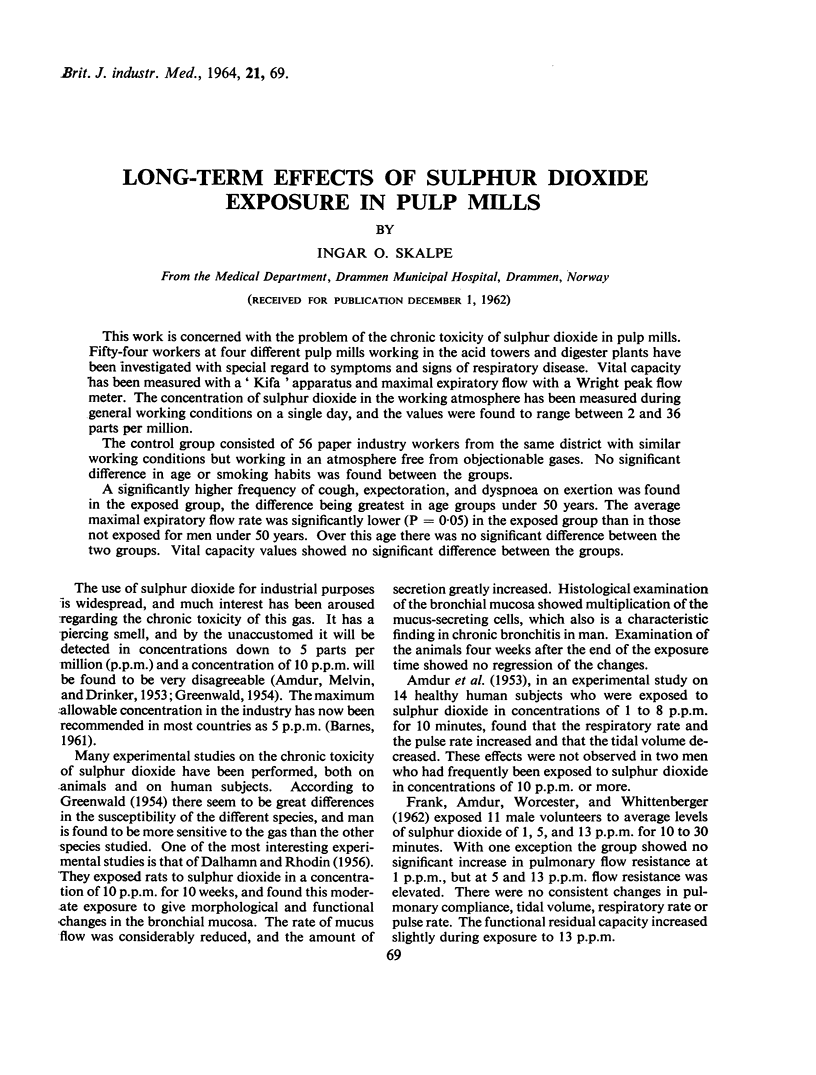
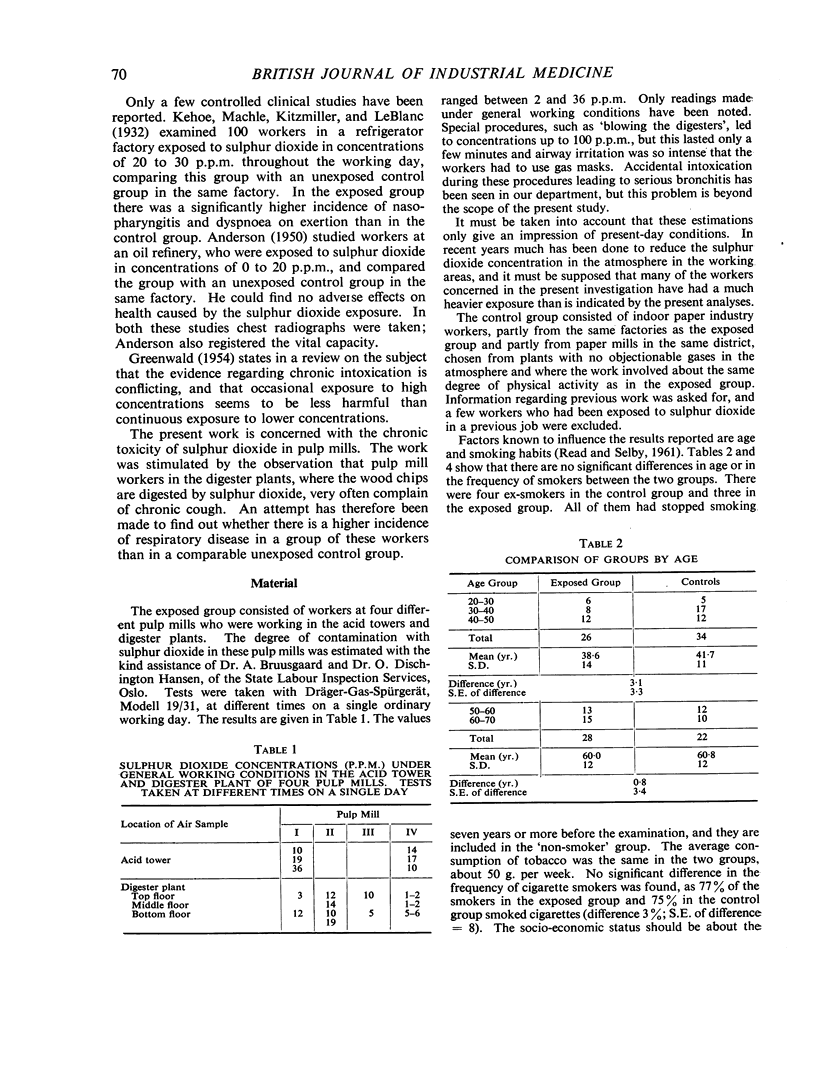
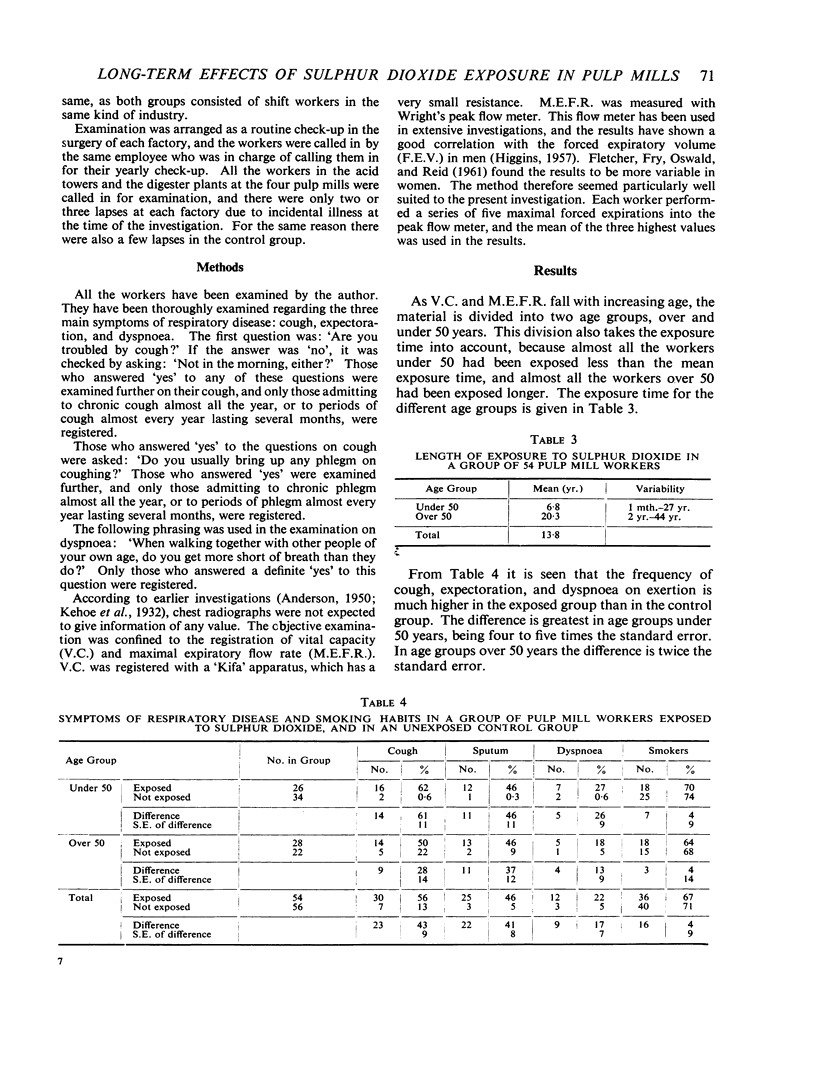
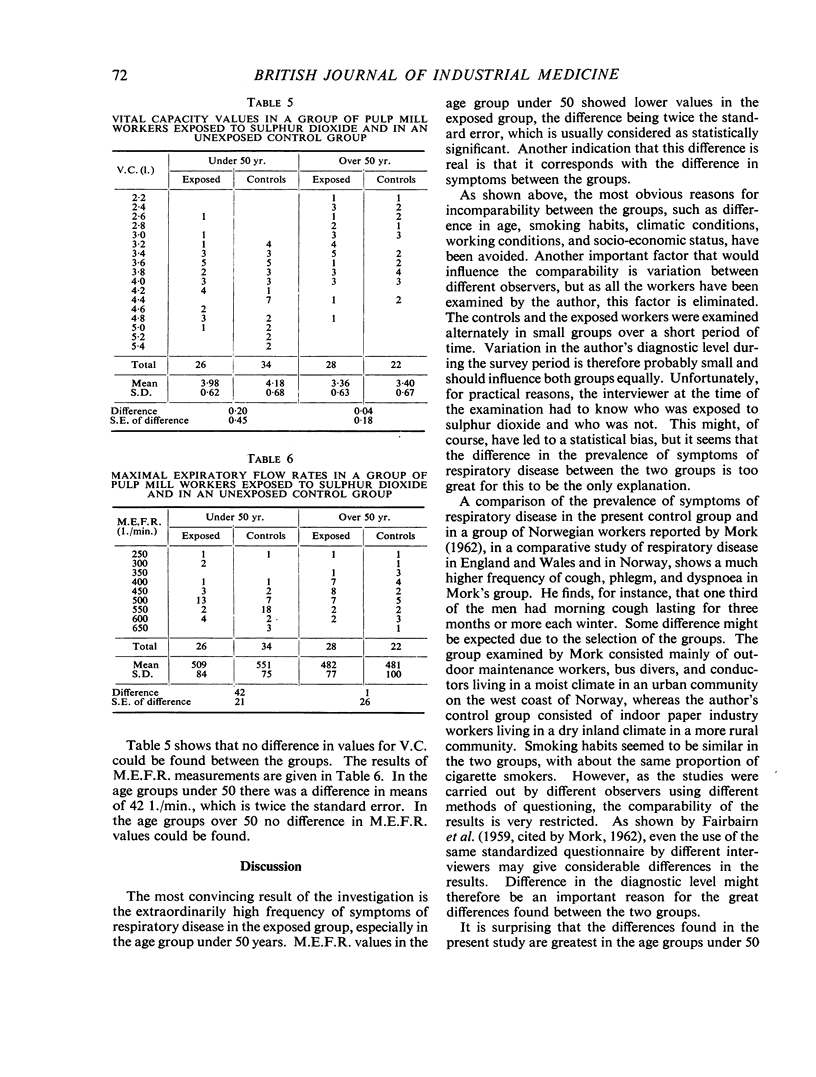
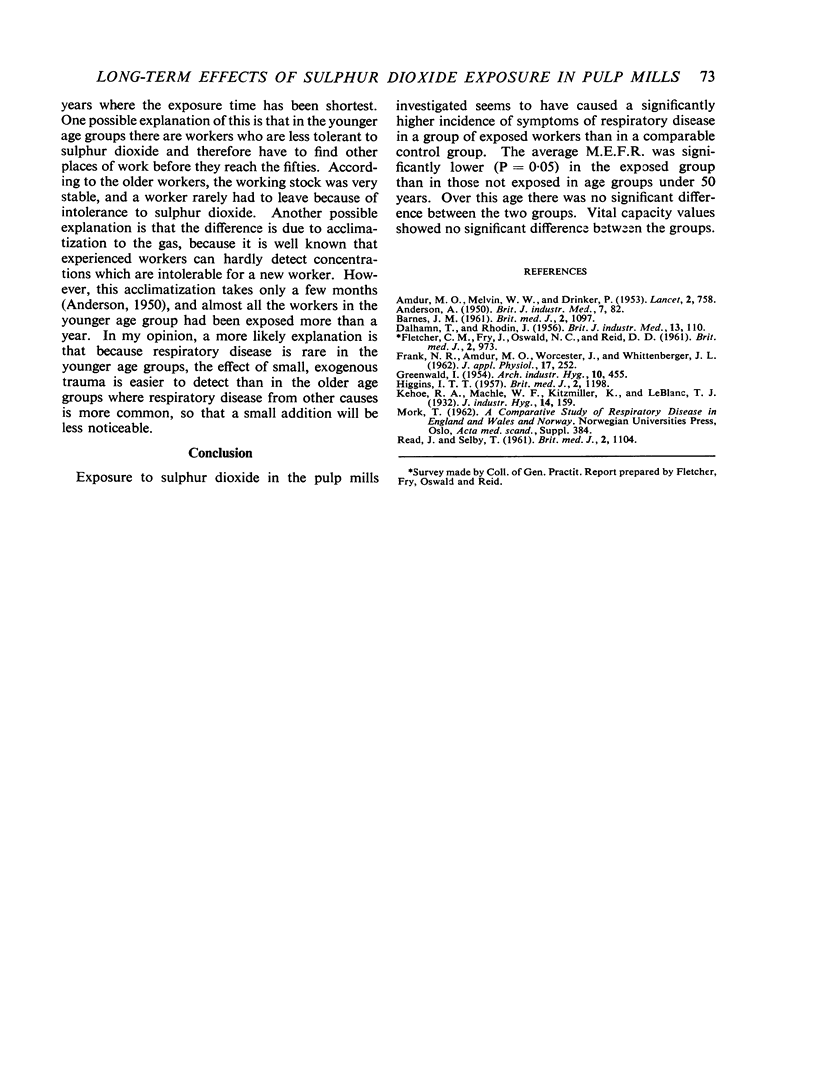
Selected References
These references are in PubMed. This may not be the complete list of references from this article.
- AMDUR M. O., MELVIN W. W., Jr, DRINKER P. Effects of inhalation of sulphur dioxide by man. Lancet. 1953 Oct 10;265(6789):758–759. doi: 10.1016/s0140-6736(53)91455-x. [DOI] [PubMed] [Google Scholar]
- BARNES J. M. Mode of action of some toxic substance, with social reference to the effects of prolonged exposure. Br Med J. 1961 Oct 28;2(5260):1097–1104. doi: 10.1136/bmj.2.5260.1097. [DOI] [PMC free article] [PubMed] [Google Scholar]
- BARNES J. M. Mode of action of some toxic substance, with social reference to the effects of prolonged exposure. Br Med J. 1961 Oct 28;2(5260):1097–1104. doi: 10.1136/bmj.2.5260.1097. [DOI] [PMC free article] [PubMed] [Google Scholar]
- DALHAMN T., RHODIN J. Mucous flow and ciliary activity in the trachea of rats exposed to pulmonary irritant gas. Br J Ind Med. 1956 Apr;13(2):110–113. doi: 10.1136/oem.13.2.110. [DOI] [PMC free article] [PubMed] [Google Scholar]
- FRANK N. R., AMDUR M. O., WORCESTER J., WHITTENBERGER J. L. Effects of acute controlled exposure to SO2 on respiratory mechanics in healthy male adults. J Appl Physiol. 1962 Mar;17:252–258. doi: 10.1152/jappl.1962.17.2.252. [DOI] [PubMed] [Google Scholar]
- HIGGINS I. T. Respiratory symptoms, bronchitis, and ventilatory capacity in random sample of an agricultural population. Br Med J. 1957 Nov 23;2(5055):1198–1203. doi: 10.1136/bmj.2.5055.1198. [DOI] [PMC free article] [PubMed] [Google Scholar]
- HIGGINS I. T. Respiratory symptoms, bronchitis, and ventilatory capacity in random sample of an agricultural population. Br Med J. 1957 Nov 23;2(5055):1198–1203. doi: 10.1136/bmj.2.5055.1198. [DOI] [PMC free article] [PubMed] [Google Scholar]
- READ J., SELBY T. Tobacco smoking and ventilatory function of the lungs. Br Med J. 1961 Oct 28;2(5260):1104–1108. doi: 10.1136/bmj.2.5260.1104. [DOI] [PMC free article] [PubMed] [Google Scholar]


